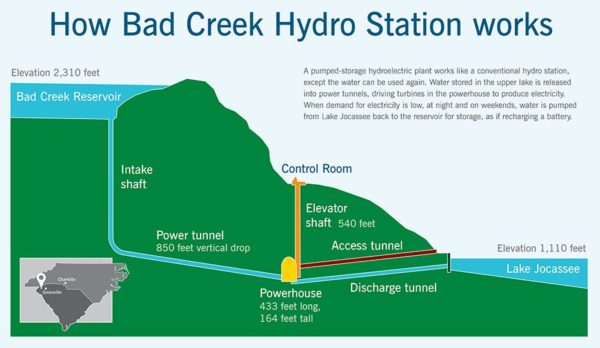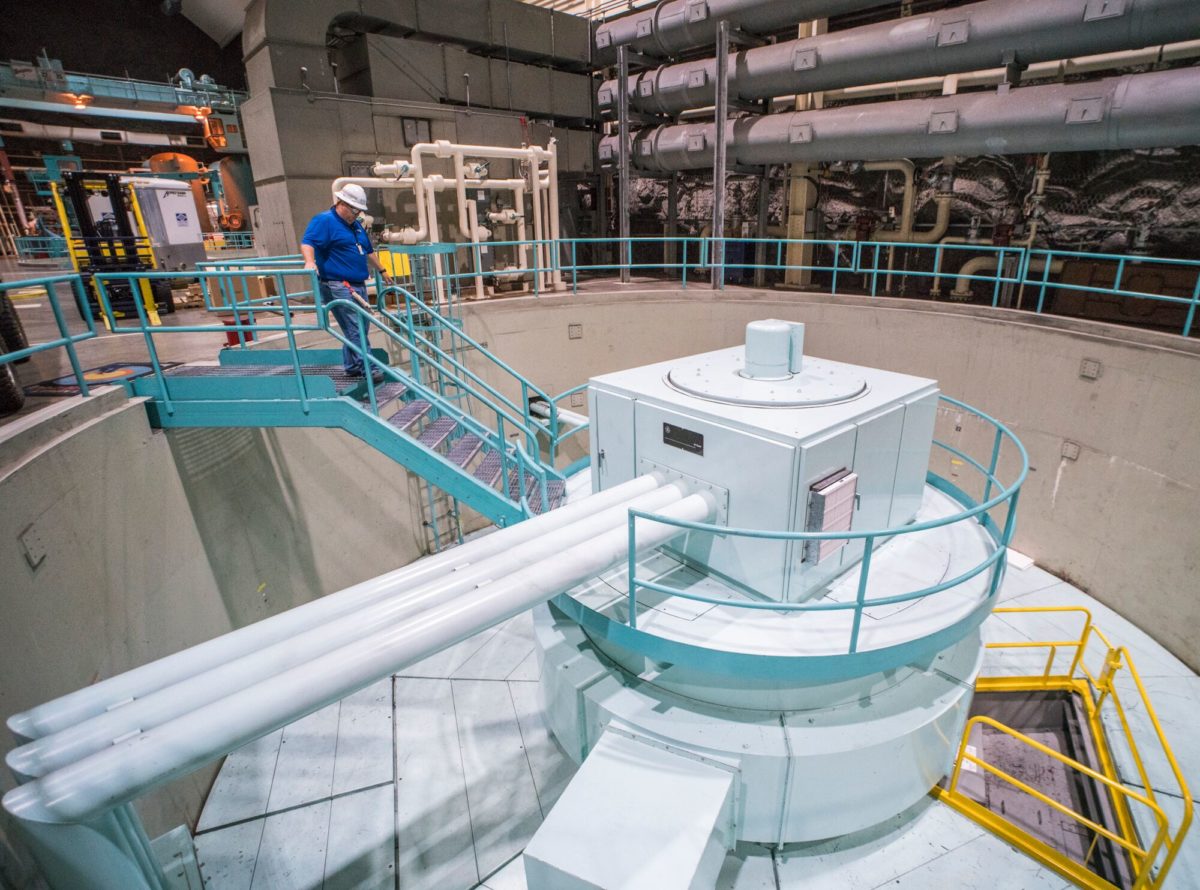Off the shores of Lake Jocassee, in Northern South Carolina, lies Duke Energy’s Bad Creek Hydroelectric Station. The project, built entirely within the mountain overlooking the lake has a generation capacity of over 1000 MW, with another 300 MW on the way by 2023, according to Duke.
Bad Creek is a pumped-storage hydro plant, the largest of Duke’s hydroelectric pants. A pumped-storage hydro plant rushes water stored at a reservoir at the top of the plant, down through a powerhouse, where the energy of the rushing water turns a turbine to generate electricity, and out into a discharge body of water, in this case Lake Joccassee.

Where Bad Creek Station separates itself from other plants is through it’s location. All hydroelectric plants require the powerhouse to be located a certain distance from the main reservoir. By being built within a mountain – which is a cool place to build things to begin with, just ask your local supervillain – the station uses the power of gravity created through the water’s nearly 3/4 of a mile drop to create more energy with less water than traditional plants.
Pumped-storage hydro is the most widely deployed form of energy storage in the United States. And not only is it relatively cheap, but it pairs well with solar energy, due to its ability to accommodate hour-to-hour shifts in the supply/demand balance.
The plant uses excess energy during times of low demand and high production to pump water back from the lake to the reservoir. Then, when demand increases again, the water is released back down to create the necessary energy. The process is similar to battery storage, except rather than storing the excess energy, it stores the water that will generate the energy.
The symbiotic relationship between pumped-storage hydro and solar is twofold. The stored energy can cover for solar production on cloudy days, and duke also notes that it can supply power in the morning before solar generation reaches its maximum output.
While pumped-storage hydro is cheaper than battery storage, the drawback is that it responds slower than batteries. Whereas energy stored in batteries can be released nearly instantaneously into the grid, pumped-storage energy production, by nature, takes time, as the water must flow for energy to be produced. This means that it must have advanced signals to deliver energy when demand is at its highest.
When upgrades are complete, the Bad Creek Plant will have a capacity of over 1300 MW. The plant upgrades come as supplementary storage to Duke’s goal of contracting 8,000 megawatts of renewable energy by 2020 – a goal it is already 80% of the way to achieving.
This content is protected by copyright and may not be reused. If you want to cooperate with us and would like to reuse some of our content, please contact: editors@pv-magazine.com.









By submitting this form you agree to pv magazine using your data for the purposes of publishing your comment.
Your personal data will only be disclosed or otherwise transmitted to third parties for the purposes of spam filtering or if this is necessary for technical maintenance of the website. Any other transfer to third parties will not take place unless this is justified on the basis of applicable data protection regulations or if pv magazine is legally obliged to do so.
You may revoke this consent at any time with effect for the future, in which case your personal data will be deleted immediately. Otherwise, your data will be deleted if pv magazine has processed your request or the purpose of data storage is fulfilled.
Further information on data privacy can be found in our Data Protection Policy.